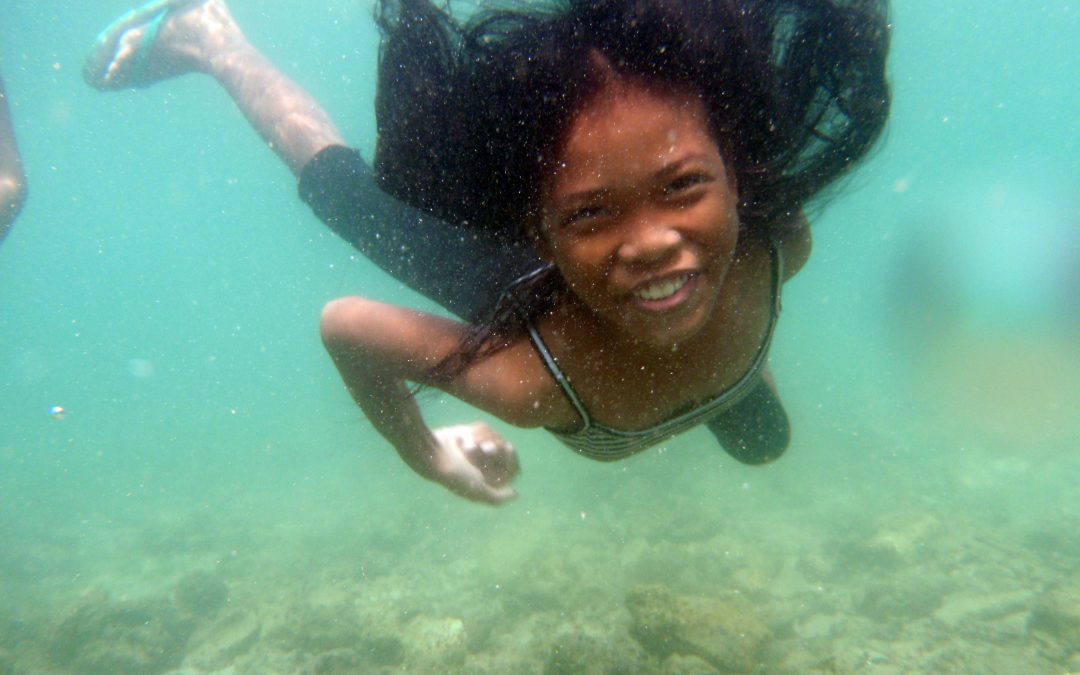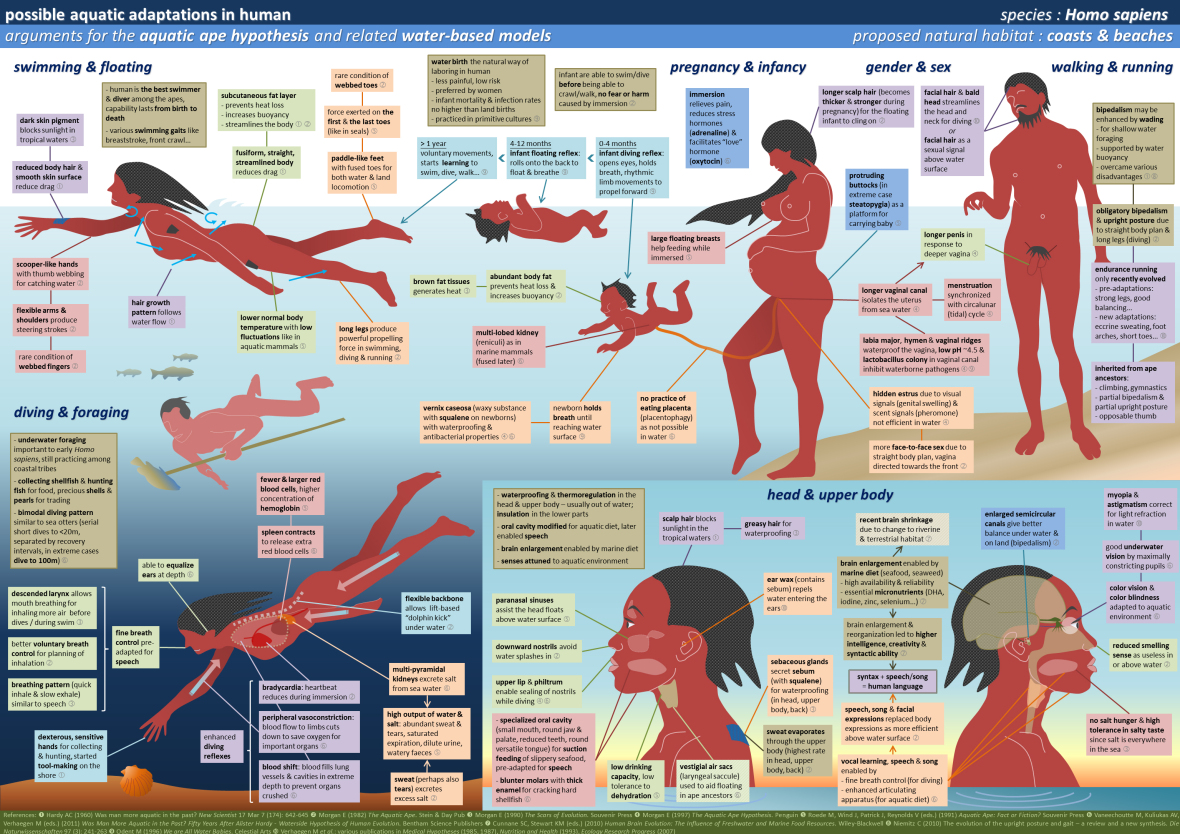Aquatic Ape Theory
theaquaticape.org
The Aquatic Ape Theory (AAT) was formulated by Alister Hardy in year 1960. The theory attempts to answer a lot of unanswered questions that have plagued mankind about our heritage – why do we walk on two legs? why are we naked? why do we sweat? How come that babies automatically hold their breath under water? etc. Hardy suggested that we during the evolution have spent a considerable time on the coastlines and adapted to a semi-aquatic environment, not on the hot dry savannah or in the forest with the other primates.
All from the beginning the theory has been criticized, ridiculed, ignored and a source of strong feelings in the anthropological community. But why is the Aquatic Ape Theory so controversial and differently understood by scientists? This is what I tried to find out in my Bachelor Thesis (2008) about the Aquatic Ape Theory at Lund University. After interviews with scientists and after reading of anthropological books, I have tried to show that the aquatic ape-coldness depends on its challenging nature against the anthropological paradigm, which describes human beings as creative and hunting creatures who can live in any environment. The Aquatic Ape theory – on the other hand – picks out one of all these environments and says: “here has our evolution occurred: we have been aquatic apes”. Due to this, the theory has become an anomaly; it has been ignored, eliminated and stigmatized.
I can see two possible future scenarios for the Aquatic Ape Theory. The first scenario is that the old anthropological paradigm continues to be intact, and then is the aquatic ape doomed to remain anonymous. The other scenario is that someone formulates a completely new paradigm where human beings are seen as environmental specialists rather than environmental generalists. Only then will the Aquatic Ape Theory get an essential role in the explanation of human evolution.
Alteration of the Waterside Theory
Initially, Alister Hardy and Elaine Morgan suggested that human ancestors had been living along the coast along during a limited period of time 5-7 million years ago, and then left for land. But today many aquatic ape proponents believe that our human ancestors continued to live close to water. One of the proponents, Dr. Marc Verhaegen, suggests that Homo Erectus (living 1,9 million to 70 000 years ago) were shallow water divers migrating along coasts and rivers. It is also beleived that the island of Flores was inhabited 1 million years ago (situated 18km from nearest island) and later evolved into what we now know as Homo Florensis that died out between 17,000 and 12,000 years ago. However, it has been suggested that even earlier predecessors, as Homo habilis or even Australopithecus, have given rise to the “Hobbit man”. It is also known that the first specimen of Homo Sapiens were living predominantly in an marine environment.
Hence, today’s proponents of the aquatic ape theory argue that human beings were living along oceans/rivers/lakes much longer than previously expected. This is a positive development for the theory, making it more falsifiable. But the main problem is still intact: present-day humans are still seen as environmental generalists.
The history of human evolutionary history is written on our bodies, not mainly in old fossils. We have to accept the idea that human beings are biologically and physiologically adapted to live in a certatin habitat, just like other species. Of course, babies give us the best clue to our evolutionary history – because they are shaped by heredity, not environment, and they are, indeed, aquatic creatures.
You can read my thesis on The Aquatic Ape Theory here: Vattenapeteorin – Paradigmskifte eller pseudovetenskap? from 2008 (in Swedish).
For more information on AAT I can recommend:
Mario Vaneechoutte, Algis Kuliukas, Marc Verhaegen’s book Was Man More Aquatic In The Past?
Fifty Years After Alister Hardy Waterside Hypothesis Of Human Evolution
David Attenborough’s Scars of Evolution for BBC (in the second programme does Professor Erika Schagatay talk about water birth practices among the Bajo Laut of southeastern Sulawesi).
Elaine Morgan’s official webpage on The Aquatic Ape Theory
Albert Wang-Chak’s poster “Possible aquatic adaptations in humans” that was presented in the Human Evolution Past, Present & Future conference in London 2013:
Come Follow Us on Twitter – Come Like Us on Facebook
Check us out on Instagram – And Sign Up for our Newsletter














